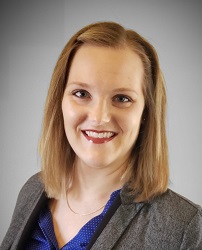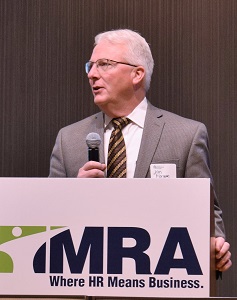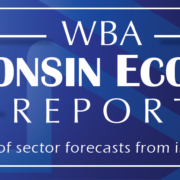Staying Flexible – Creative Ideas for Childcare Accommodations
 For many communities across Wisconsin, there is still extreme uncertainty about what this school year will look like. The only thing we know for sure is that it will be a year unlike any other. With schools still constructing plans for opening virtually, in-person, or in some combination of the two, businesses are grappling with creating their own plans for how to accommodate working parents suddenly in need of childcare.
For many communities across Wisconsin, there is still extreme uncertainty about what this school year will look like. The only thing we know for sure is that it will be a year unlike any other. With schools still constructing plans for opening virtually, in-person, or in some combination of the two, businesses are grappling with creating their own plans for how to accommodate working parents suddenly in need of childcare.
 To get more actionable insights for member banks, WBA spoke with Jim Morgan, vice president of business development and workforce strategies at MRA-The Management Association, Inc (pictured right). His advice centers on one major theme: flexibility.
To get more actionable insights for member banks, WBA spoke with Jim Morgan, vice president of business development and workforce strategies at MRA-The Management Association, Inc (pictured right). His advice centers on one major theme: flexibility.
The first step to being flexible is to create options, i.e. banks should create a set of plans for more than one scenario, including all-virtual. “Even if your school district is going back in person, create a plan for virtual,” Morgan advised. No one knows what the impact of the virus will be going into the fall and winter, so sudden school closures are a very real possibility.
Next, banks need to find out what their employees need and want, though Morgan says how banks do that may vary depending on the size of the bank (number of employees and locations). Some may be small enough for leadership to simply host a meeting for all affected employees. Others may need to consider a survey or other mechanism to determine needs. Either way, the best first step is a pulse survey of employees, whether that’s done in a meeting or via a traditional digital survey. “Get the demographics of your employees so you know the scope of impact for each department or area of the bank,” said Morgan. Ask about the number and ages of children and whether the employee has non-school childcare available.
The final plan—or set of plans for different circumstances—will be as individual as the company, says Morgan. “How you want to handle this is a strategic discussion,” he explained. The bank’s hours, customer preferences, and school district choices are all variables, as are the number of employees affected, which teams/departments they’re in, the ages of their children, and the availability of local childcare.
Ideas to consider:
Alternate shifts – Morgan says he’s seeing a lot of this in manufacturing, but it also applies for frontline bank staff.
Align schedules – Give staff options to align the school and work schedules, which can be especially helpful for situations where the school is taking a hybrid approach. Ex: Week on, week off, or alternating days.
Fill in gaps – Look at hiring more part time employees to cover shifts left open if some employees need to reduce hours or change schedules.
Offer emergency childcare leave – This can be a valuable benefit, especially with many childcare centers in Wisconsin now closed.
Supplement childcare costs – This benefit allows the bank to make direct payments on behalf of participating employees to their chosen childcare provider. The funds can cover all or part of the employees’ childcare expenses.
Set up childcare onsite or nearby – While the initial costs and liability considerations are significant, this convenience could be a high-value employee benefit long after the pandemic is over. At least a few banks in Wisconsin are considering this.
Be a facilitator – Banks can take on the role of connector, matching up employees with concierge services (nannies, sitters, etc.) or creating a daycare match program for employees (where employees take turns watching one another’s children).
When deciding which combination of these ideas, or others, to implement, bank leaders should consider their institution’s culture along with cost constraints and logistical feasibility. Not all banks have a culture where employees would be comfortable watching one another’s children, for example.
Again, the key to implementing the bank’s plan successfully will be to stay flexible. An employee’s circumstances may change from week to week or even day to day, and that uncertainty multiplies the more variables are affected. “If the bank has staff across 10 different school districts, know how you are going to keep track of everything,” said Morgan. “It may be a morning briefing so you know what’s happening.” Some banks may even need a pool of frontline employees to be “on call” to cover shifts on short notice if a peer is unable to come in.
Throughout this entire process, Morgan says clear, authentic communication is essential. “If there was ever a time for transparency and communication, this is it,” he said. “Leadership needs to tell people the plan, why they’re doing it, and acknowledge it may change quickly.” Regarding communication—with employees, customers, and vendors—Morgan says more is always better. "You can’t over-communicate, even if it’s ‘we don’t know’ or a brief update,” he said. “Give people a chance to ask questions.”
Read more from Morgan on this topic here.
Seitz is WBA operations manager and senior writer.
MRA-The Management Association is a WBA Associate Member.
By, Amber Seitz







